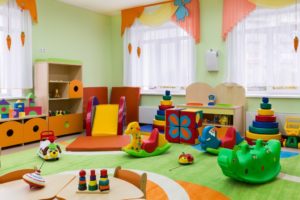 For a lot of people, home is where the heart is. It’s where they feel the safest and the most comfortable. They can do plenty of activities without the fear of judgment. It’s where they rear their children and build happy memories. A home, though, isn’t only for humans; it can also be breeding grounds for bacteria. Germs can be everywhere even in places you probably not think of:
For a lot of people, home is where the heart is. It’s where they feel the safest and the most comfortable. They can do plenty of activities without the fear of judgment. It’s where they rear their children and build happy memories. A home, though, isn’t only for humans; it can also be breeding grounds for bacteria. Germs can be everywhere even in places you probably not think of:
1. Tiles
Bacteria rule on the floor, especially if you’re using tiles. In fact, they can be so abundant that it turns the five-second rule into a fallacy. The study of Clemson University in 2007 tends to corroborate it. In their research, they exposed bread and bologna on different types of flooring. These were tiles, wood, carpet, and laminate. They also used Staphylococcus aureus and E. coli for the experiment.
The data then showed that the transfer of bacteria was immediate, but it was the fastest in tile floors. It could be because these pathogens are not only on the surface. They can also be in between the grout. Homeowners, therefore, should consider going beyond vacuuming or steam cleaning. Perhaps it’s high time for some tile cleaning in Provo.
2. Bedsheets
Just because the bedsheet appears bright white doesn’t mean it’s clean. It can be a host of thousands of microorganisms such as fungi and bacteria. The reason: many things can end up on the bed, not just your body. First, it can have traces of pollen, soil, and chemicals from cosmetics and body care products. It may also have some crumbs of food and pet dander.
Of course, there are different types of body secretions. These include saliva, nasal mucus, traces of urine, phlegm, and vaginal or anal mucus. Experts suggest washing these sheets every two weeks. By the time they are two years old, you need to bid them goodbye.
3. Toys
 Do you see those Legos and dolls in the kids’ room? They can be playthings for bacteria as well.
Do you see those Legos and dolls in the kids’ room? They can be playthings for bacteria as well.
According to Birgit Pruess, an associate professor in the Department of Veterinary and Microbiological Sciences in North Dakota State University, the swabbed plastic giraffe had 450 colonies of bacteria!
The germ load can also differ on many factors such as the volume of germ transfer from the toy to the hands, as well as the material of the plaything. For example, plastic tends to attract the most bacteria, but they’re also the easiest to clean.
Should you stop letting the kids play some toys? The answer is no. These are some of the effective ways to boost their creativity and critical thinking. But you need to clean them frequently. Follow the washing instructions from the manufacturer.
4. Mobile Devices
Mobile devices are some of the dirtiest possessions in the world. It can be ten times worse than a toilet seat. It shouldn’t be surprising as more than 60% of users bring their devices in the restrooms. On average, a person touches their phone over 45 times a day.
When you think about it, a home can be gross. That’s why you need some experts to help you clean it once in a while. Most of all, try your best to improve your immunity to help you fight off these pathogenic threats.


